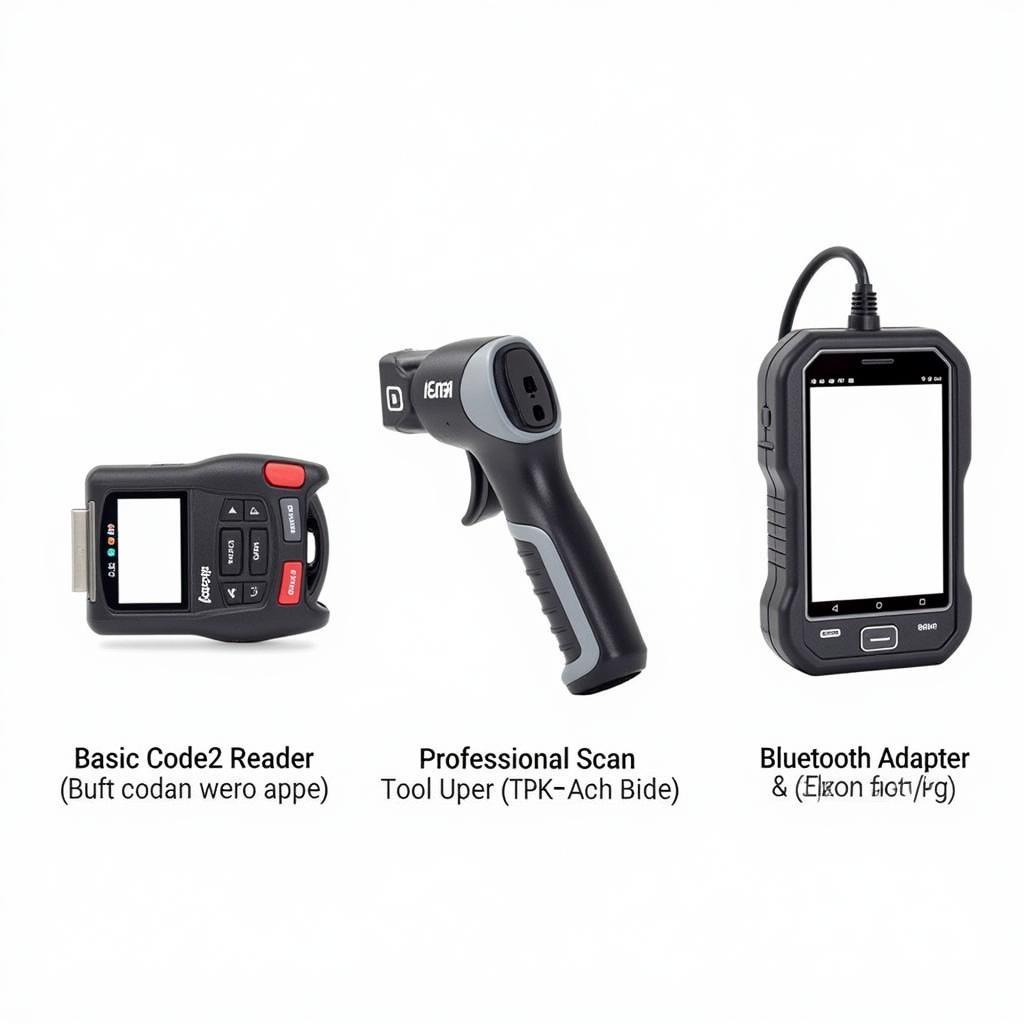Monitoring your transmission temperature is crucial for vehicle health and longevity. Overheating can lead to serious damage and costly repairs. While some vehicles have built-in transmission temperature gauges, many don’t. That’s where using a scan tool for transmission temp gauge readings comes in handy. This allows you to keep a close eye on your transmission’s temperature, ensuring it operates within safe parameters.
Knowing how to use a scan tool for transmission temperature monitoring can save you from expensive repairs down the road. This guide will delve into the benefits, processes, and different types of scan tools available for checking your transmission temperature. Whether you’re a seasoned mechanic or a DIY enthusiast, understanding this essential diagnostic tool will empower you to maintain your vehicle’s transmission effectively. Accurate temperature readings are vital for identifying potential problems early and preventing catastrophic failures.
After connecting the scan tool, navigate to the “Transmission Temperature” PID (Parameter ID). Each scan tool has a slightly different interface, so refer to the user manual for specific instructions. automotive scan tool pid diagnostics pdf
Why Monitor Transmission Temperature?
Transmission fluid plays a critical role in lubricating, cooling, and operating the complex components within your transmission. Excessive heat breaks down the fluid, reducing its effectiveness and potentially causing damage. Monitoring the temperature helps you identify potential issues before they become major problems.
Signs of Transmission Overheating
- Burning smell: A distinct burning odor coming from the transmission area can indicate overheating fluid.
- Slipping gears: If your vehicle struggles to shift gears smoothly, it could be a sign of overheating.
- Check engine light: The check engine light can illuminate for various reasons, including transmission problems related to temperature.
- Unusual noises: Whining, grinding, or clunking noises from the transmission could point to overheating and potential damage.
How to Use a Scan Tool for Transmission Temp Readings
Using a scan tool to check your transmission temperature is a relatively simple process.
- Locate the OBD-II port: The OBD-II port is typically located under the dashboard on the driver’s side.
- Connect the scan tool: Plug the scan tool into the OBD-II port.
- Turn on the ignition: Turn the key to the “on” position without starting the engine.
- Select “Transmission Temperature”: Navigate through the scan tool’s menu to find the “Transmission Temperature” PID.
- Read the temperature: The scan tool will display the current transmission temperature.
Types of Scan Tools for Transmission Temperature
Several types of scan tools can provide transmission temperature readings.
Basic OBD-II Scanners
These affordable scanners are ideal for DIYers and provide basic diagnostic information, including transmission temperature. elm327 bluetooth obd2 scan tool review
Professional Scan Tools
Advanced scan tools offer more comprehensive features and data analysis capabilities, including real-time temperature monitoring and graphing.
Bluetooth Scan Tools
These scanners connect wirelessly to your smartphone or tablet, providing convenient access to transmission temperature data. 34t5 bluetooth obdii scan tool utube
 Various Types of OBD2 Scanners
Various Types of OBD2 Scanners
What’s a Normal Transmission Temperature?
Normal transmission temperature typically ranges between 175°F and 220°F (80°C and 104°C). However, this can vary depending on factors such as driving conditions, ambient temperature, and vehicle type.
What Causes High Transmission Temperature?
- Low transmission fluid: Insufficient fluid levels can lead to overheating.
- Towing heavy loads: Towing beyond the vehicle’s capacity puts extra strain on the transmission, causing it to work harder and generate more heat.
- Stop-and-go driving: Frequent acceleration and deceleration in heavy traffic can increase transmission temperature.
- Faulty transmission cooler: A malfunctioning transmission cooler can prevent proper heat dissipation.
subaru display trouble codes without scan tool
Conclusion
Using a scan tool for transmission temp gauge readings is a proactive step towards protecting your vehicle’s transmission and avoiding costly repairs. Regular monitoring empowers you to address potential issues before they escalate. Understanding your vehicle’s normal operating temperature and the factors that can cause overheating is crucial for effective maintenance.
 Mechanic Using a Scan Tool to Diagnose a Car
Mechanic Using a Scan Tool to Diagnose a Car
FAQ
- Can I use any OBD-II scanner for transmission temperature? Most OBD-II scanners will provide access to transmission temperature, but some basic models may not.
- How often should I check my transmission temperature? It’s a good practice to check it periodically, especially before and after long drives or when towing.
- What should I do if my transmission temperature is too high? Stop driving immediately and let the transmission cool down. Check the fluid level and have a mechanic inspect the vehicle.
- Can a scan tool reset transmission codes? Yes, many scan tools have the ability to clear diagnostic trouble codes, including those related to the transmission.
- Is it safe to drive with a slightly elevated transmission temperature? While a slight increase might not be immediate cause for concern, it’s essential to identify and address the underlying cause.
- Do all cars have a transmission temperature sensor? Most modern vehicles do, but some older models may not.
- Where can I find the specific PID for my vehicle’s transmission temperature? Refer to your vehicle’s service manual or online resources.
obd scan tools for a 2005 morgan roadster
Need help with your car diagnostics? Contact us via WhatsApp: +1(641)206-8880, Email: [email protected] or visit us at 276 Reock St, City of Orange, NJ 07050, United States. Our 24/7 customer support team is here to assist you.


